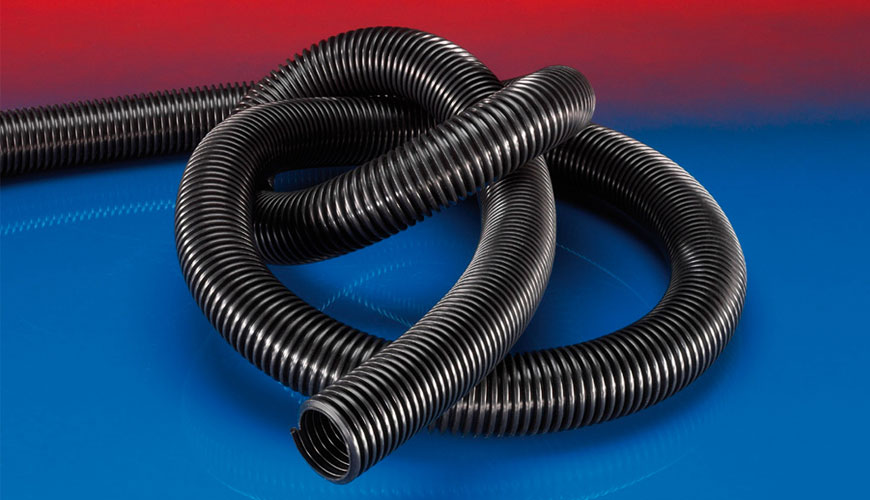

The ASTM D991 test covers the determination of the volume resistance of rubbers used in electrically conductive and antistatic products. This test method assumes that the surface conductivity is negligible compared to the conductivity passing through the sample.

Electrical behavior of rubber products used in certain applications, safety, static changes, current conduction, etc. important for a variety of reasons. This test method is useful in predicting the behavior of such rubber products.
ASTM D991 Test Procedure
The electrode assembly is fixed from 10 TV·m (eg, hard rubber, polyethylene, polystyrene, etc.) to which a pair of current electrodes is connected, and a pair of potential electrodes, with the four electrodes parallel and their upper surfaces in the same horizontal plane. Another pair of current electrodes, identical to the first pair, must be connected to a second piece of insulating material so that they can be superimposed on the sample directly over the first pair.
Current electrodes have a length of at least 10 mm (0,4 in) greater than the width of the sample, a width of between 5 and 8 mm (0,2 and 0,3 in), and a height of between 0,05 mm (0,002 in). should be. 10 and 15 mm (0,4 and 0,6 in). The potential electrodes shall have a length and height equal to the existing electrodes and taper to an edge with a maximum radius of 0,5 mm (0,02 inch) at the top surface. The distance between potential electrodes should not be less than 10 mm (0,4 in.) or more than 66 mm (2,6 in.) and should be known within 6 2%.
The current electrodes should be equidistant outside the potential electrodes and separated by at least 20 mm (0,8 inch). Electrodes can be made of brass, nickel, stainless steel, etc. shall be made of corrosion-resistant metal such as The insulation resistance between the electrodes will be greater than 1 TV. The distance between potential electrodes should not be less than 10 mm (0,4 in.) or more than 66 mm (2,6 in.) and should be known within 6 2%. The current electrodes should be equidistant outside the potential electrodes and separated by at least 20 mm (0,8 inch). Electrodes, brass, nickel, stainless steel, etc. shall be made of a corrosion-resistant metal such as
The insulation resistance between the electrodes will be greater than 1 TV. The distance between potential electrodes should not be less than 10 mm (0,4 in.) or more than 66 mm (2,6 in.) and should be known within 6 2%. The current electrodes should be equidistant outside the potential electrodes and separated by at least 20 mm (0,8 inch). Electrodes can be made of brass, nickel, stainless steel, etc. shall be made of corrosion-resistant metal such as The insulation resistance between the electrodes will be greater than 1 TV.
Values stated in SI units should be accepted as standard. Values in parentheses are for informational purposes only.
This standard does not purport to address all, if any, safety concerns associated with its use. It is the responsibility of the user of this standard to establish appropriate safety, health and environmental practices and to determine the applicability of regulatory restrictions prior to use.
Our organization also provides testing services within the scope of ASTM D991 Standard Test Method for Rubber Property - Volume Resistance of Electrically Conductive and Antistatic Products, within the framework of laboratory testing services. Do not hesitate to contact our laboratory EUROLAB for your testing and certification requests.
To get an appointment, to get more detailed information or to request an evaluation, you can ask us to fill in our form and reach you.